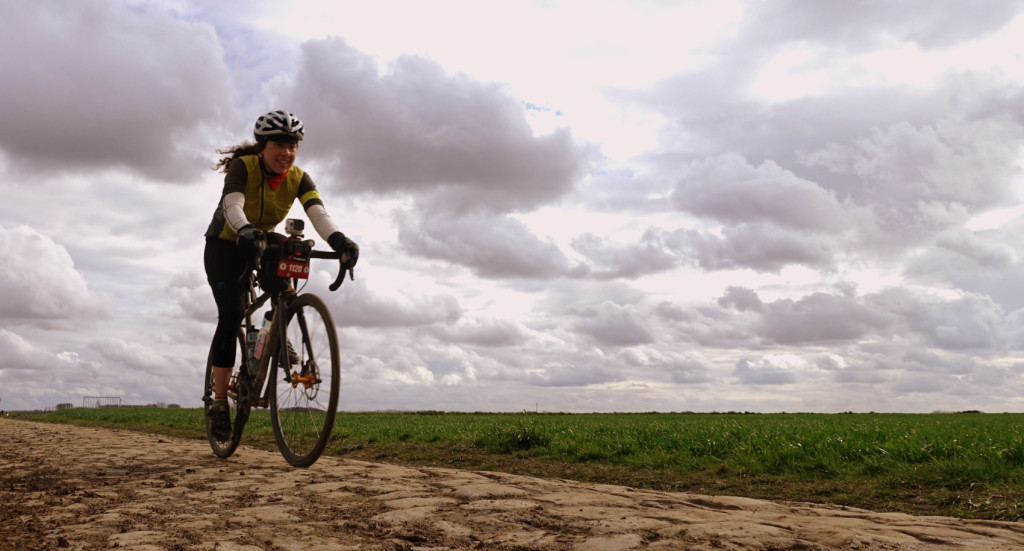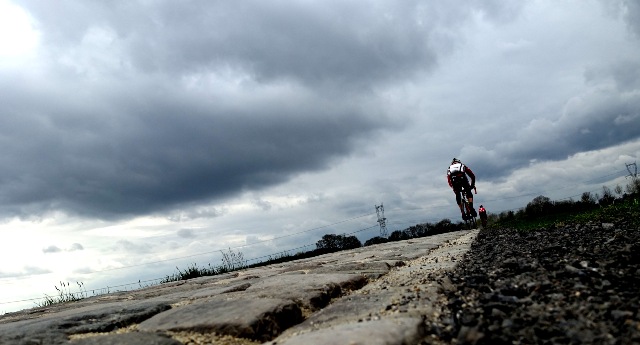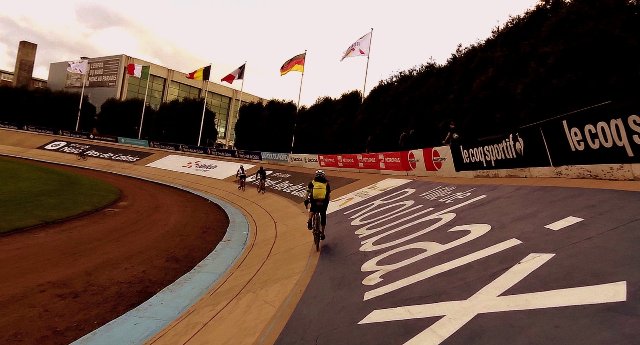We packed our travel cases in a low-level frenzy, trying to get designs done and customers taken care of before getting on the flight to Paris. By the time we landed, our heads were full of cobbled dreams. And doubts. Were we fit enough? Did we bring the right clothing? We looked around at the others in our group and got quietly into the van.
We’re not like most of the people who take on the Paris-Roubaix Challenge, either die-hard amateur racers who want to test themselves against the famed pavé of northern France or die-hard race fans who have memorized the route, can talk at length about each edition of the Hell of the North, and who want only to ride in the tire tracks of their heroes. We are fans, but bike-building precludes us from taking much else very seriously. We love to ride, but going fast is more something we measure against ourselves than against the pros.
We came to the Paris-Roubaix Challenge as a way of breaking out of our daily context, to see a part of cycling culture that exists in a parallel universe, and to test ourselves (and our bikes) in a way we hadn’t tried before. Oh, and we wanted to see the race, arguably the most storied event in pro cycling.
At dinner the night before our own ride, war stories crossed the table like a full salt shaker. Many of our table mates had ridden it before. Some were planning to wear two pairs of bibs. Most had their bars double-wrapped. As first-timers, all we could do wassecond guess our own choices, our bikes set up more or less as they always are for travel.
Fortunately, the Paris-Roubaix Challenge does not take in the 100+km of pavement the pros ride before the first sector of cobbles at Troisvilles, so we were fresh, if a little nervous, when we got there. Our first impressions, in all honesty, were that the cobbles were fun to ride. We are avid trail and gravel riders, and the cobbles, though each sector has its own unique character, present the same sort of bike handling challenges. The dead flat terrain let us focus on keeping our front wheel moving forward.
We rolled out in a cool, light rain, the sort of grim, gray day that part of the world, and certainly the race, is known for. The rest of the day would bring everything from cold showers to bright sunshine, and rather than struggling with the constant changes, we found they really just set off the different phases of our adventure.
We had fun trying to figure out the best place to ride through each sector of pavé. Sometimes it was the smooth gutter. Other times it was right on the crown, down the middle of the road, although rain slick as they were, you could feel your tires sliding off those tallest stones. In some places the road was so bowed upward, so concave, that the following cars would scrape loudly over the crown, a horrible sound, especially for their drivers.
When we reached the Arenberg Forest, we found complete mayhem. This is the sector that claims the most pros every year, and the same was true for the amateurs. An ambulance was parked 50 meters in, already attending to someone with a day-ending problem. The cobbles there are larger than the other sectors and more irregular. The gaps in between seem to fit a tire perfectly, and the whole thing was covered in black mud. We felt fortunate to make it through unscathed.
The hardest section, though, came later at the Carrefour de l’Arbre. This sector is long, and there is no where to ride. The gutter is uneven and unpredictable. All the cobbles had rounded tops that rattled our teeth for more than 2km.
For all this, we felt surprisingly good at the end. All day we had been careful to keep the right pace, often slowing down on the pavement between sectors to save our legs. Over most of the cobbles, it actually seemed to help to ride faster, to try to ride across the tops of the stones.
Rolling finally into the famed velodrome at Roubaix, the transition from the day’s rumbling and bouncing to the smooth, curved bank of the track was jarring. We didn’t feel elated or relieved or victorious, so much as overwhelmed, trying to build a little speed to keep from sliding down the steep embankment just short of the finish line.
We’d come through. Our bikes had come through, performing flawlessly, not a dropped chain, not a flat to change, and given a little time to think on it, we saw it for what it was, one of the most extraordinary days we might ever spend on a bike.




